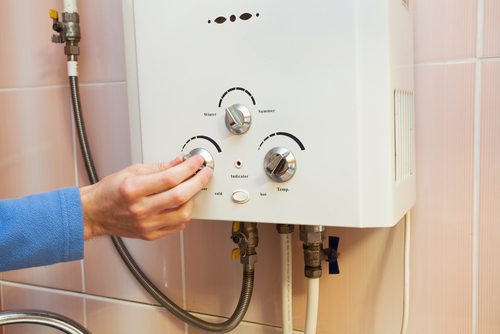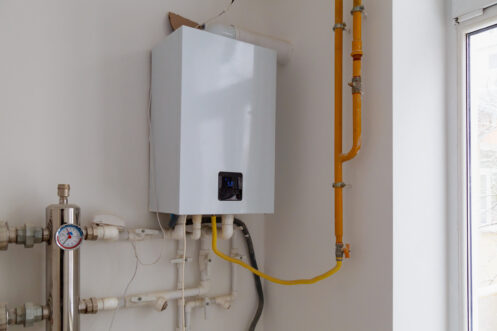This great article in the next paragraphs on the subject of Tips on Maintaining a Water Heater is relatively engaging. Try it and draw your own findings.

Hot water is vital for daily comfort, whether it's for a revitalizing shower or cleaning dishes. To ensure your hot water system runs effectively and lasts much longer, normal maintenance is key. This article gives practical suggestions and understandings on exactly how to keep your home's warm water system to stay clear of disruptions and costly repairs.
Introduction
Preserving your home's hot water system may appear daunting, however with a couple of basic actions, you can guarantee it operates smoothly for years to come. This overview covers every little thing from recognizing your hot water system to DIY maintenance ideas and recognizing when to hire expert help.
Significance of Keeping Your Warm Water System
Normal maintenance not only prolongs the life expectancy of your warm water system however likewise guarantees it runs efficiently. Overlooking maintenance can result in reduced effectiveness, higher energy bills, and even premature failure of the system.
Indications Your Hot Water System Requirements Upkeep
Knowing when your hot water system needs attention can avoid major issues. Watch out for indications such as inconsistent water temperature level, strange noises from the heater, or rusty water.
Flushing the Water Heater
Flushing your water heater eliminates debris build-up, improving performance and lengthening its life.
Monitoring and Changing Anode Rods
Anode poles stop rust inside the storage tank. Checking and replacing them when worn out is crucial.
Facility Concerns Needing Expert Aid
Examples include major leakages, electric issues, or if your hot water heater is continually underperforming.
Regular Professional Upkeep Conveniences
Expert maintenance can include complete assessments, tune-ups, and making sure conformity with security standards.
Examining and Adjusting Temperature Settings
Changing the temperature settings ensures optimal efficiency and safety and security.
Do It Yourself Tips for Upkeep
You can do a number of upkeep jobs yourself to keep your warm water system in leading condition.
Checking for Leaks
Frequently examine pipes and connections for leaks, as these can bring about water damages and higher bills.
Recognizing Your Warm Water System
Before diving right into upkeep jobs, it's handy to recognize the fundamental components of your warm water system. Typically, this includes the water heater itself, pipelines, anode rods, and temperature level controls.
Monthly Upkeep Tasks
Routine monthly checks can aid catch small problems before they rise.
Evaluating Stress Relief Valves
Testing the stress relief valve ensures it operates correctly and protects against too much pressure build-up.
Insulating Pipelines
Protecting warm water pipes minimizes heat loss and can save energy.
When to Call a Specialist
While DIY upkeep is useful, some issues need professional know-how.
Conclusion
Routine upkeep of your home's warm water system is essential for effectiveness, durability, and price financial savings. By adhering to these pointers and recognizing when to look for specialist aid, you can make certain a dependable supply of hot water without unexpected interruptions.
How to Maintain an Instant Hot Water Heater
Before tinkering with your hot water heater, make sure that it’s not powered on. You also have to turn off the main circuit breaker and shut off the main gas line to prevent accidents. Also turn off the water valves connected to your unit to prevent water from flowing into and out of the appliance. 2. When you’re done, you have to detach the purge valves’ caps. These look like the letter “T” and are situated on either side of the water valves. Doing so will release any pressure that has accumulated inside the valves while at the same time avoid hot water from shooting out and burning your skin. 3. When the purge valves’ caps are removed, you have to connect your hosing lines to the valves. Your unit should have come with three hoses but if it didn’t, you can purchase these things from any hardware or home repair shops. You can also get them from retail stores that sell water heating systems. Read the user’s manual and follow it to complete this task properly. When the hosing lines are connected, open the purge port’s valves. 4. You should never use harsh chemical cleaners or solutions when cleaning your unit. Make use of white vinegar instead. It should be undiluted and you’ll probably use about 2 gallons. 5. Now flush your water heater. This task should probably take about 40 minutes. We can’t give you specific directions for this because the procedure is carried out depending on the type, model and brand of your heater. With that being said, refer to the user’s manual. 6. When you’re done draining the unit, you have to turn off the purge port valves again. Remove the hosing lines that you earlier installed on each of the water valves. Put the valve caps (purge port) back in their respective places and be very careful so as not to damage the rubber discs that are found inside these caps. 7. Now that everything’s back in place, check your user’s manual again to find out how to reactivate your water heating system. 8. Once it is working, turn one of your hot water faucets on just to let air pass through the heater’s water supply pipes. Leave the tap on until water flows smoothly out of it. https://www.orrplumbing.com/blog/2014/september/how-to-maintain-an-instant-hot-water-heater/

We hope you liked our topic on Water Heater Maintenance Tips You Can't Afford to Forget. Thanks for taking a few minutes to browse our short article. Loved our review? Please quickly share it. Help other people locate it. Thank you so much for taking the time to read it.
Click Here